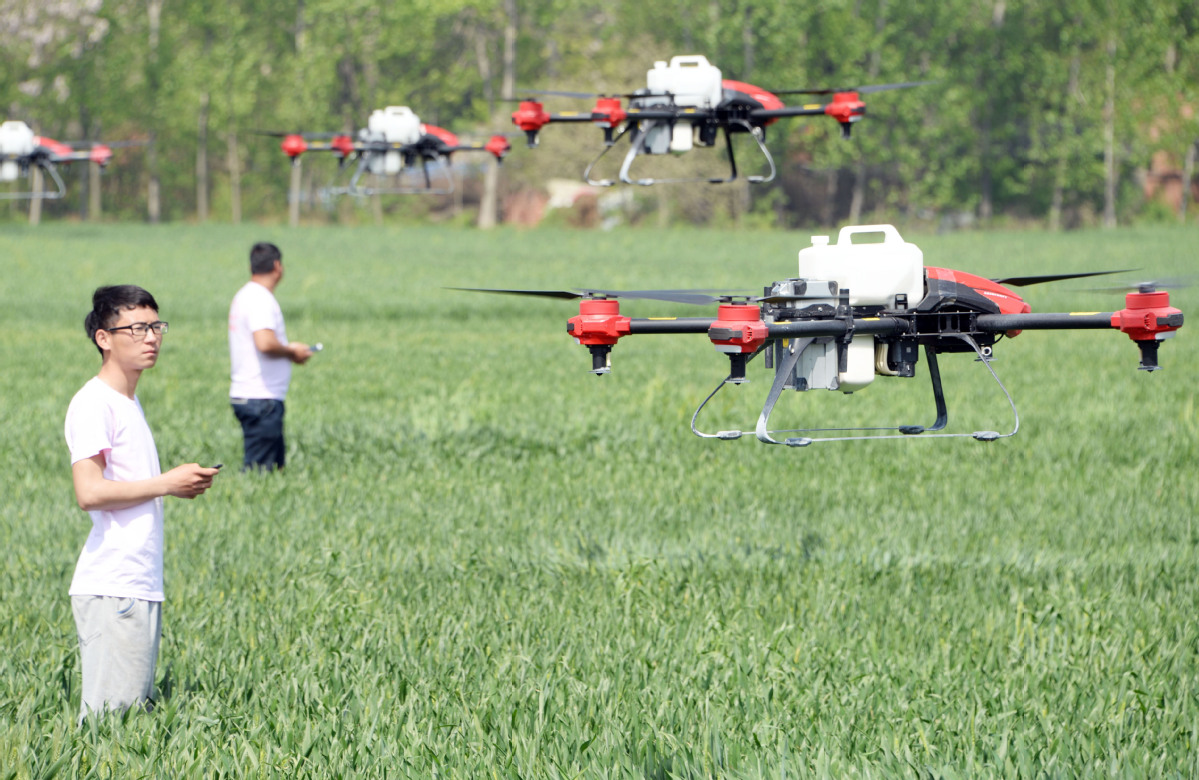Drones help ease China's labor shortage in rural areas


NANCHANG-Aerial drones have become a new source of income for 41-year-old Xin Jianying, a resident of Jiangxi province, who has only a primary school education.
During the pesticide spraying season for rice paddies, Xin said many farmers from her village and surrounding areas have requested her services as a drone pilot.
The rural cooperative at Shandi village arranged a month of training for residents. At the end, Xin outperformed her neighbors in a competition whose goal was to select 12 drone pilots.
"Drone operation requires both good eyesight and good hand-eye coordination," said the mother of two boys. Her husband left the village as a migrant worker, so the extra income-20,000 yuan ($3,190) for a few months' work-helps.
Each drone can carry 10 kilograms of pesticide and cover a hectare of rice paddies in half an hour. The same task performed by a manual laborer would take five hours.
Last year, Yujiang county was one of the first areas in Jiangxi to promote the use of drones to help solve the rural labor shortage.
Xin stands on a ridge overlooking the fields as she controls the drone. She said aerial spraying is more effective than manual spraying, as the pesticides can be more evenly distributed over the crops.
Wu Qiubang, Party secretary of the village's rural cooperative, said most of the young laborers have migrated to the cities for work, leaving the elderly, women and children to care for about 150 hectares of rice paddies.
The cooperative is comprised of some 70 farmers, half of whom are over 68. The other half are women whose husbands are absent.
Xin is considered a capable laborer in the village, home to 320 people. She works her own family's field by herself, while taking care of her children and elderly relatives.
Liu Liqian, 30, the youngest member of the drone pilot team, said her father-in-law labors on land owned by some 30 households. The drone has greatly eased his workload.
Last year, China designated Zhejiang, Anhui, Jiangxi, Hunan and Guangdong provinces, along with Chongqing municipality, to start projects that encourage the use of the aerial vehicles in agriculture.
Under those projects, the purchase and use of drones is subsidized in a number of ways, Wu said. It not only saves a lot of manual work, but also contributes to revolutionizing traditional agriculture.
The cooperative receives 51,000 yuan in subsidies to purchase each drone, which cost 65,800 yuan apiece. The county government has an additional budget of 10 million yuan per year to provide incentives for drone-assisted farming.
The cooperative now has a fleet of 13 drones. There are about 30 village-run drone pilot teams in Yujiang county.
In addition to using the drones in their own fields, Xin and her teammates earn additional income from the cooperative for providing drone services for other farmers. The service is in demand, as it is much cheaper than hiring manual laborers.
Wu said the drones are produced by a company in Jiangsu province and are equipped with a geographical positioning system, which allows the drone pilots to design routes for the most efficient flight plan for each paddy.
Jiangxi currently has 1,654 drones for agricultural use.
Xinhua




































